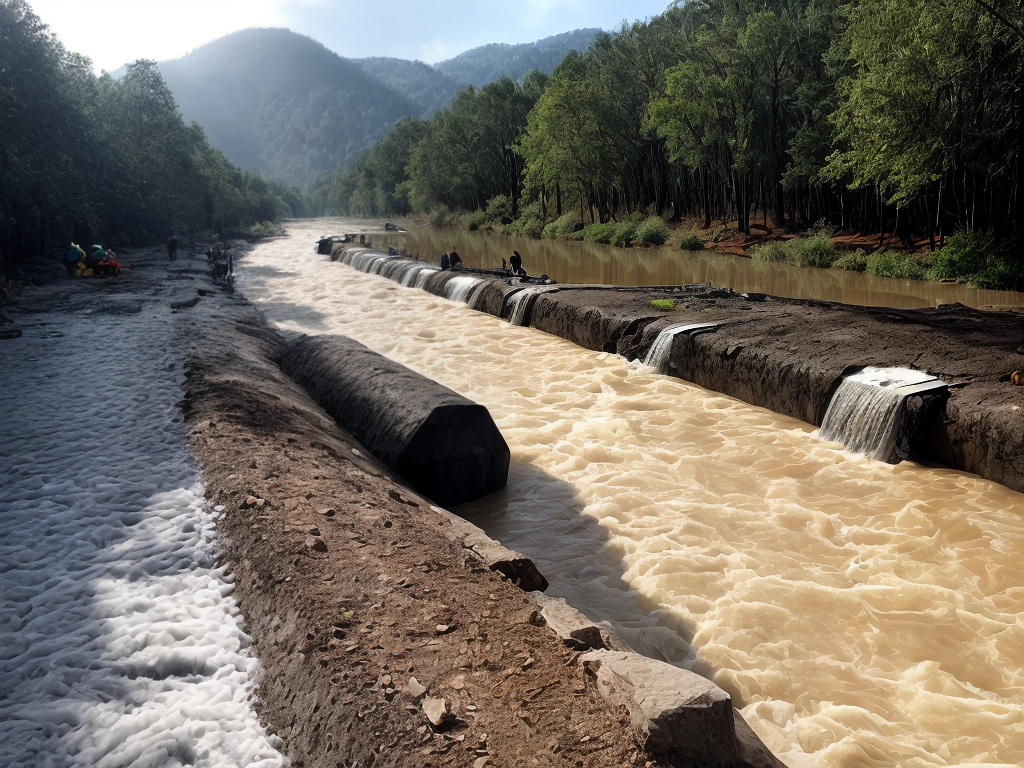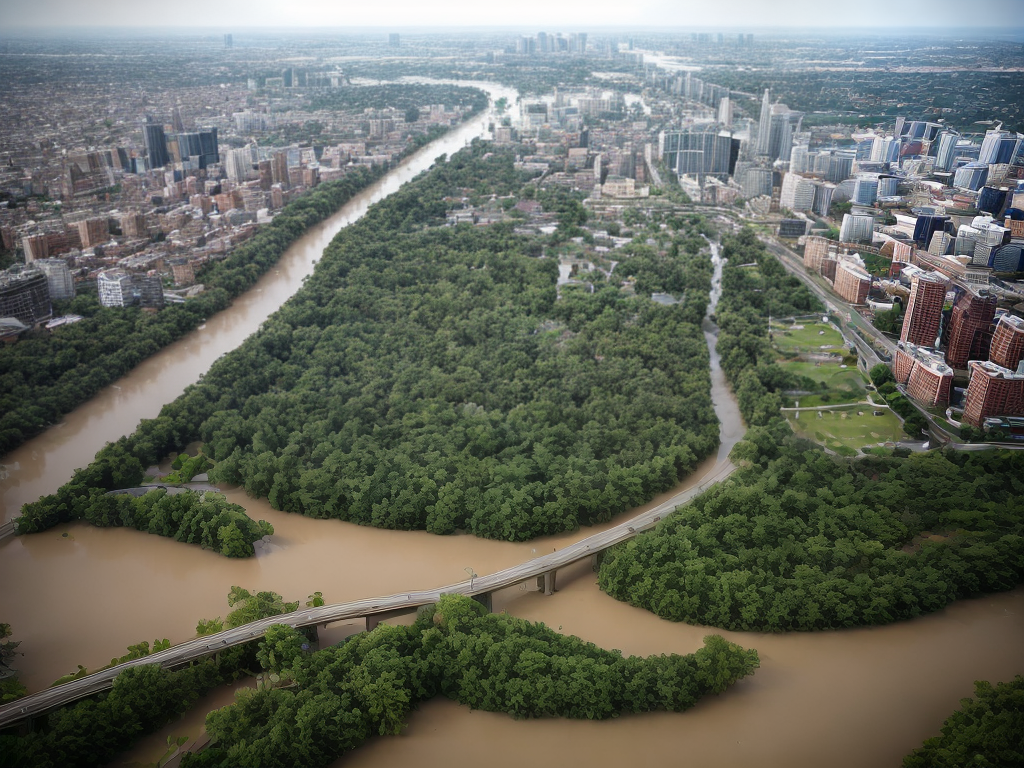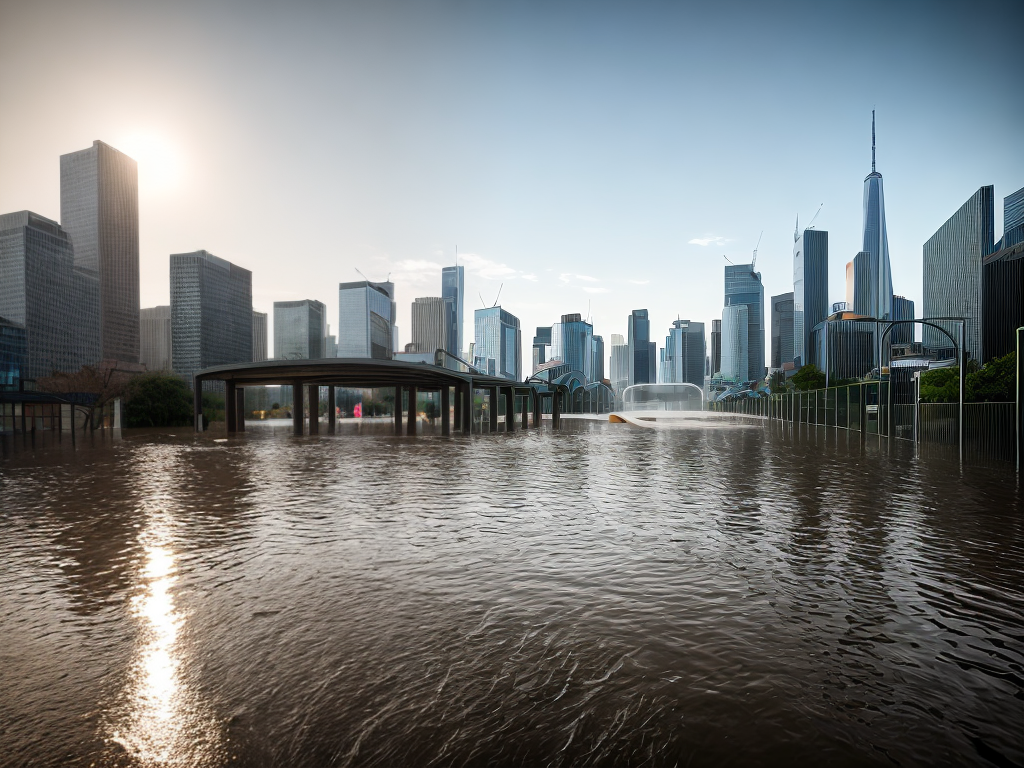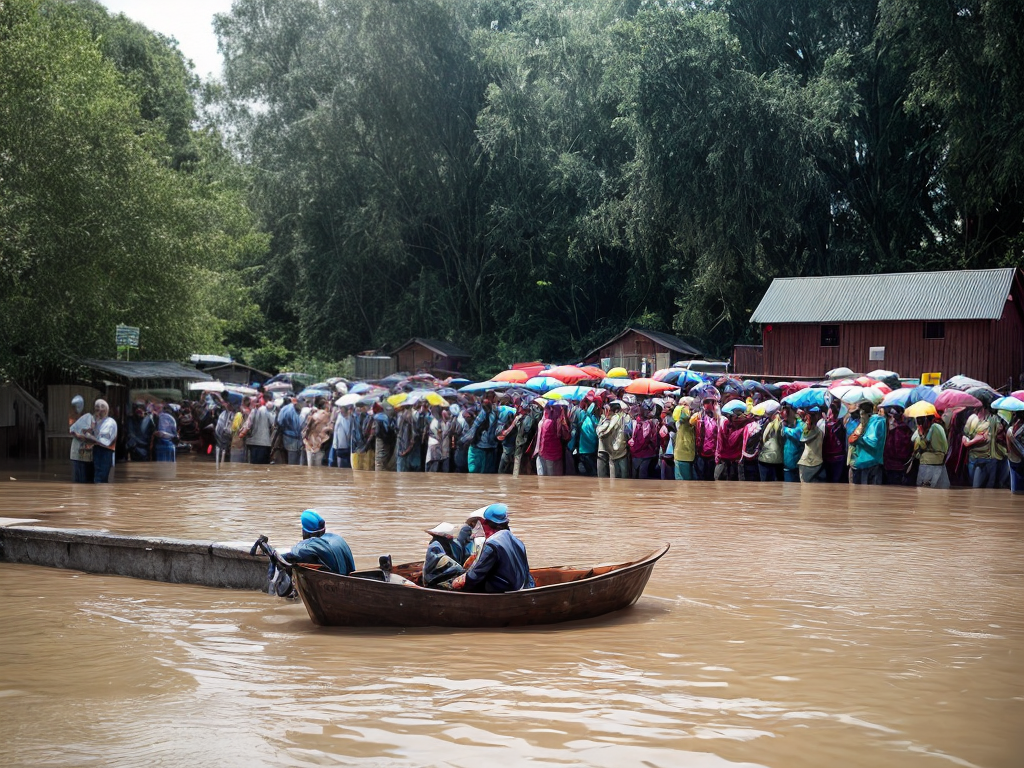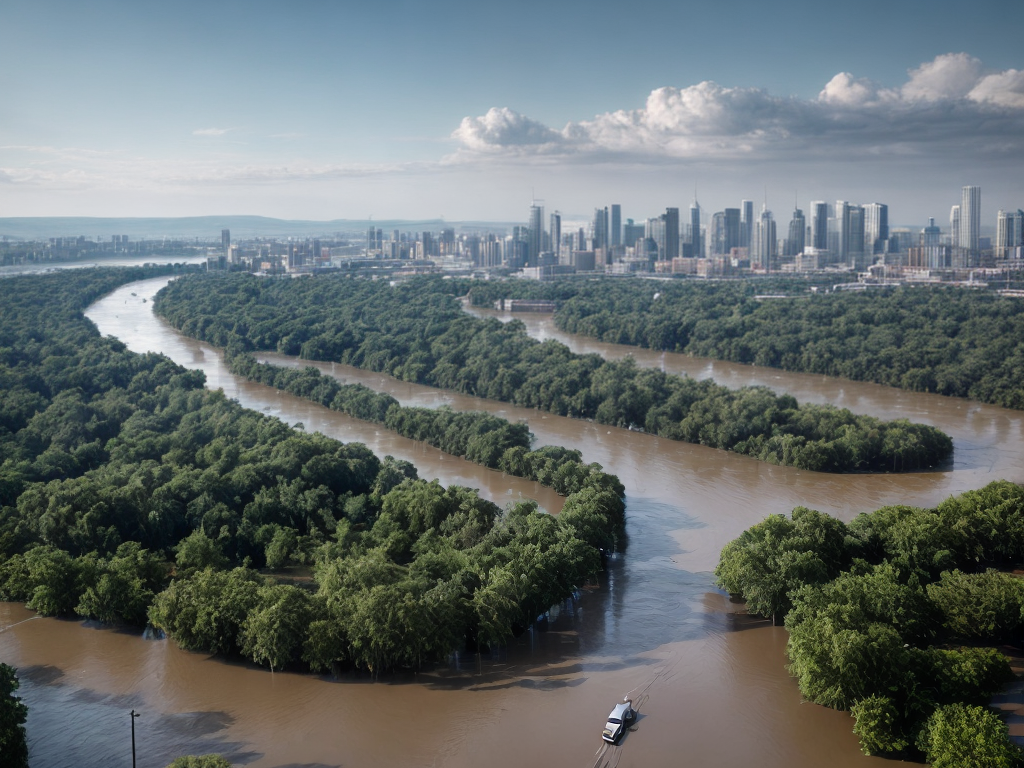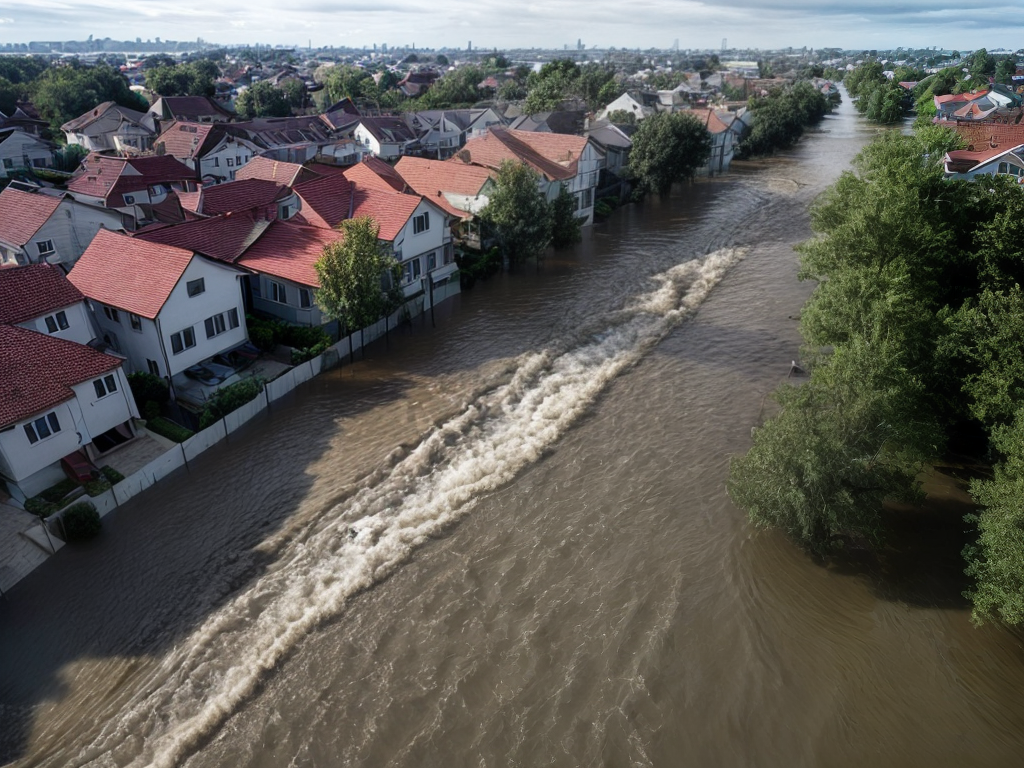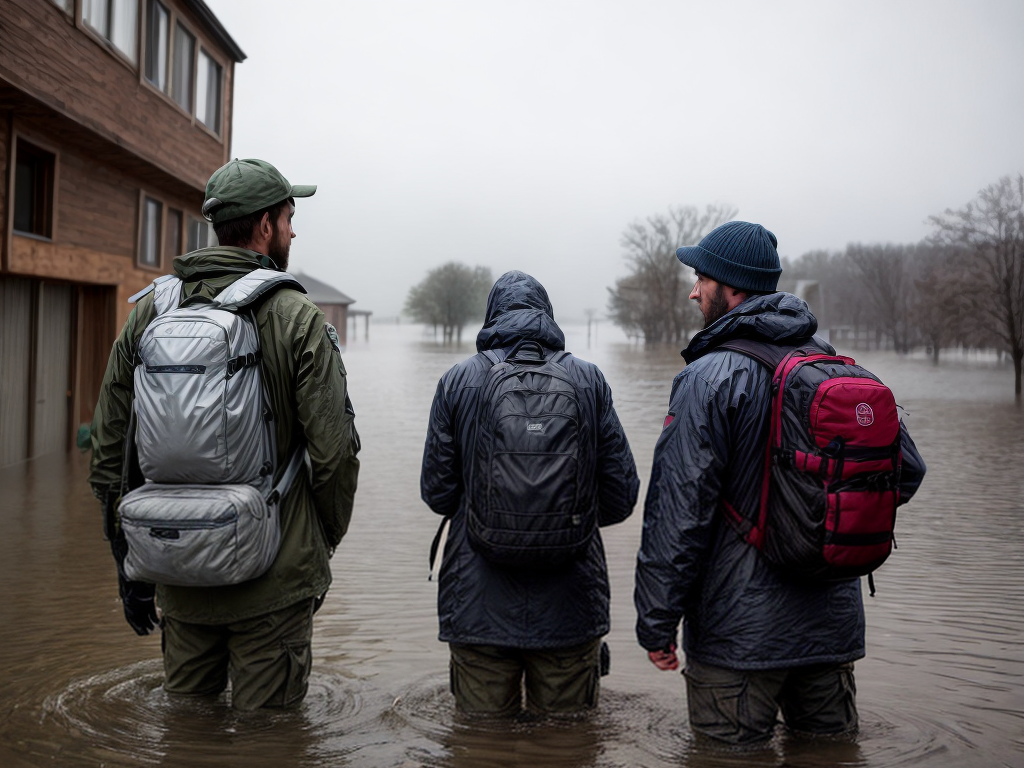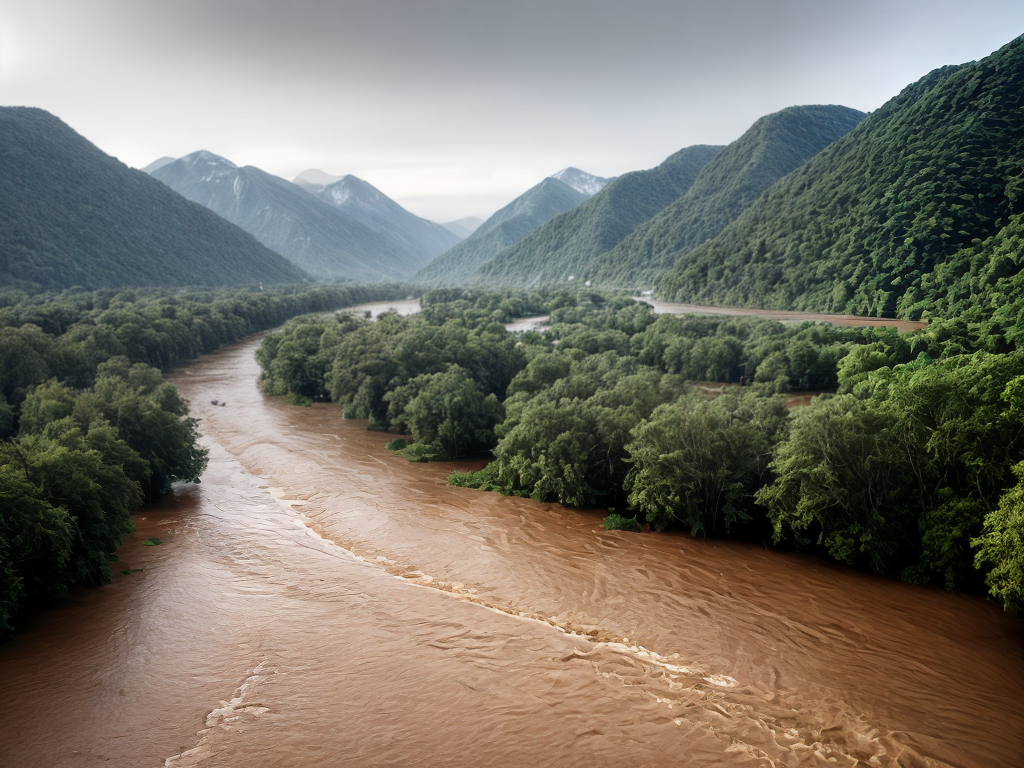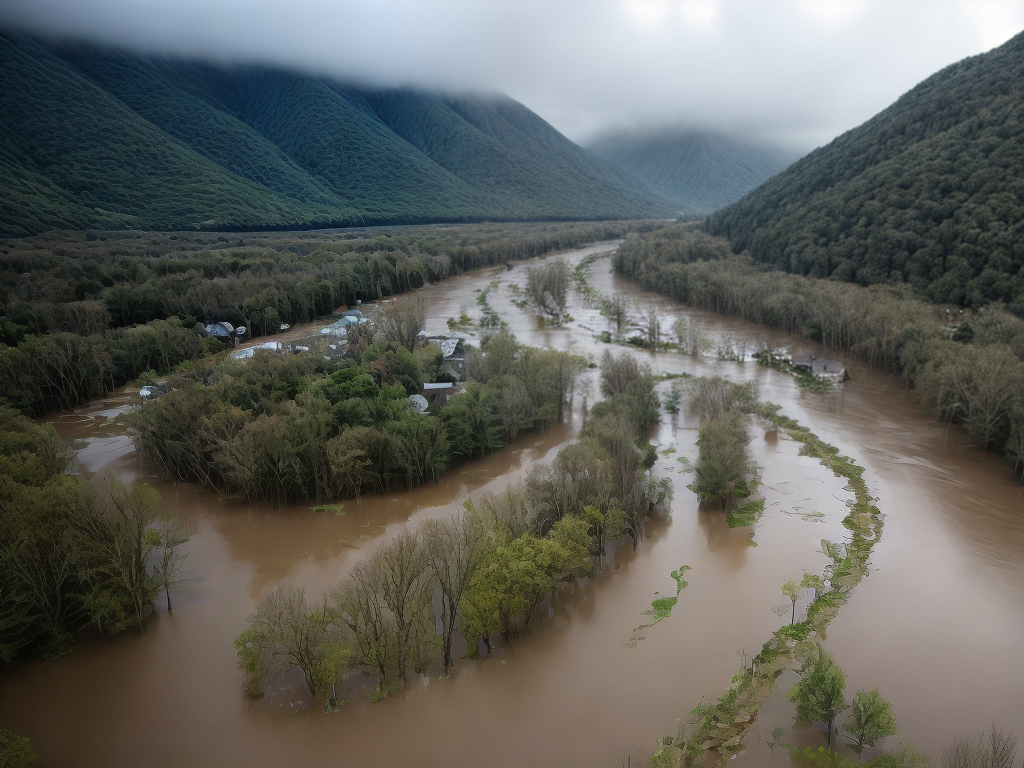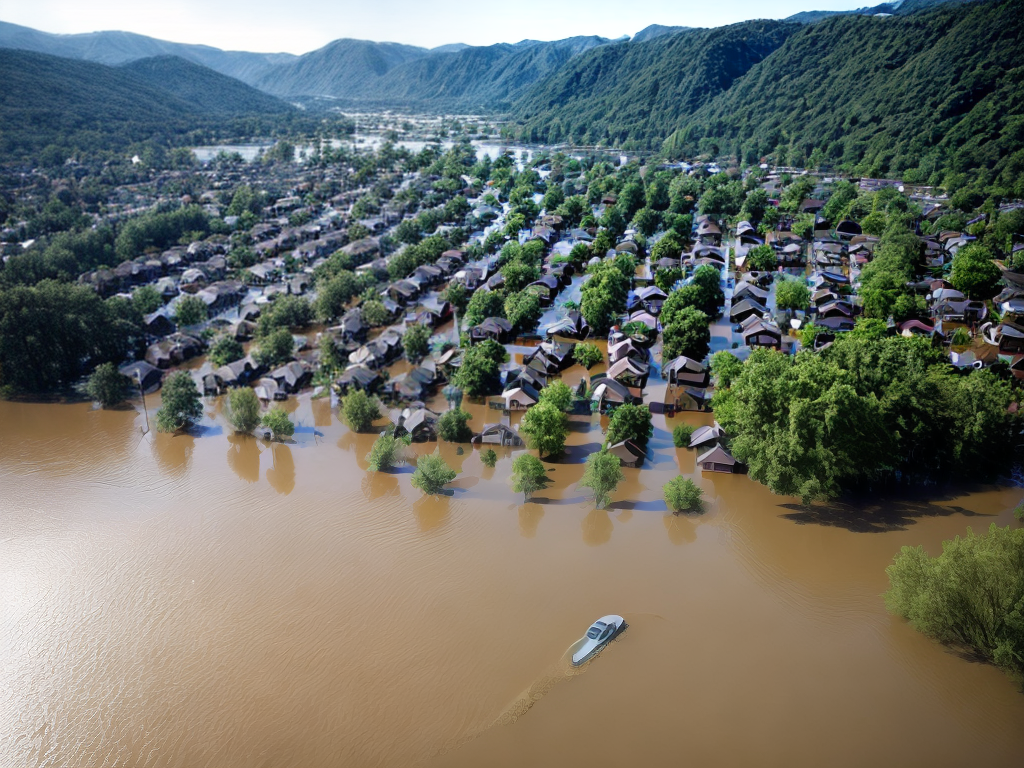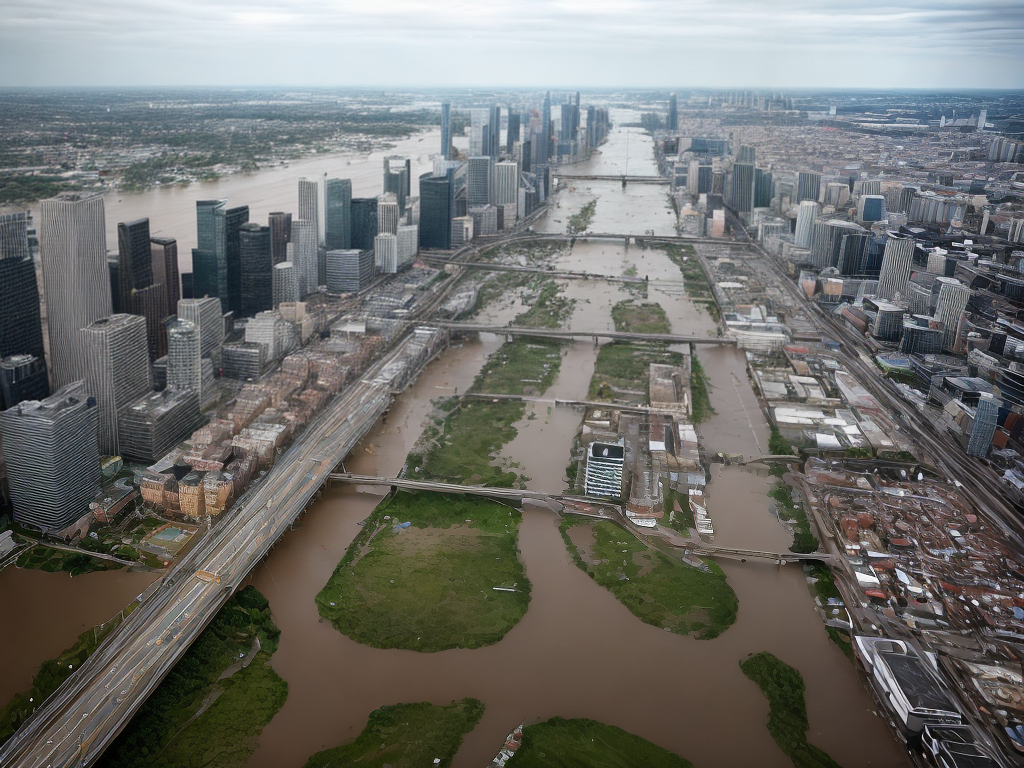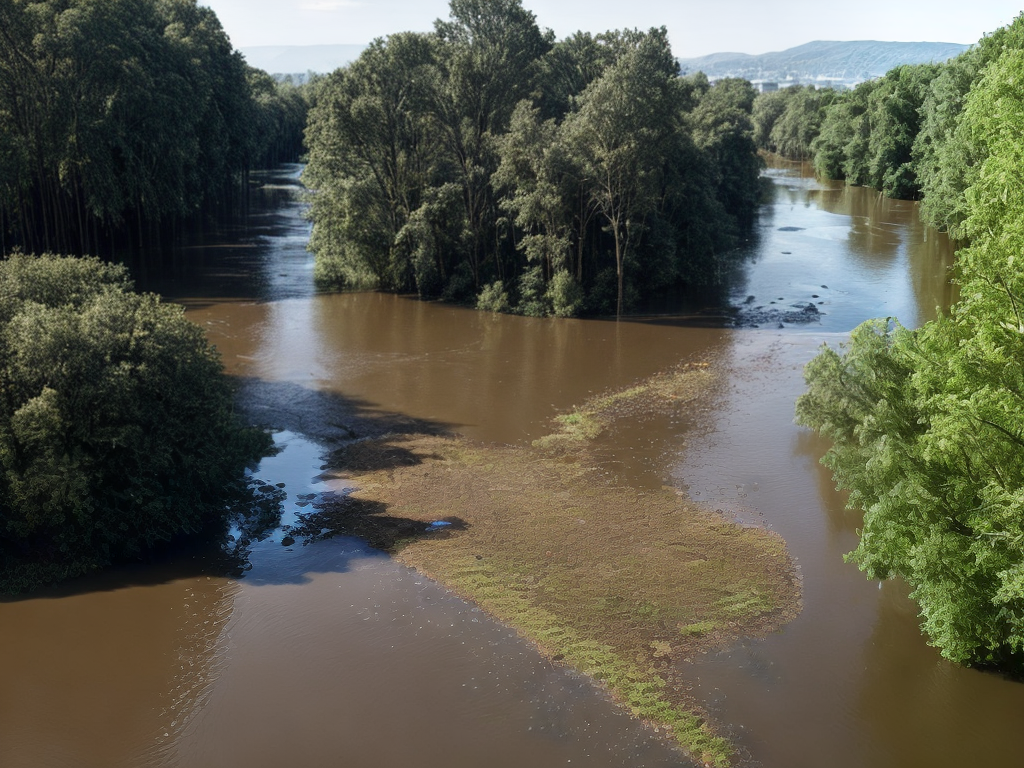
We all know that flood risk is a serious concern, with devastating consequences for communities around the world. In fact, did you know that according to the World Bank, flooding affects more people globally than any other natural disaster? With such a significant impact, it is crucial to explore innovative approaches to mitigate flood risks. That’s where technology partners come in. They offer a wealth of tools and solutions that can revolutionize flood risk reduction efforts. From advanced monitoring systems to cloud computing for data analysis, these partners are playing a pivotal role in shaping the future of flood risk management. But how exactly do these technologies work, and what benefits do they bring? Let’s dive into the world of technology partners in flood risk reduction and discover how they are making a difference.
Key Takeaways
- Advanced monitoring systems and innovative mapping tools play a crucial role in effective flood risk reduction.
- Real-time data collection and remote sensing technologies provide up-to-date and accurate information for informed decision-making.
- Technology partners enhance the resilience of communities at risk and mitigate the impact of floods through their advanced technologies.
- Flood modeling, prediction, early warning systems, and geographic information systems (GIS) are essential tools for managing and mitigating flood risks.
Advanced Monitoring Systems
We have found that implementing advanced monitoring systems is crucial for effective flood risk reduction. In today’s rapidly changing world, where extreme weather events are becoming more frequent and severe, traditional approaches to flood management are no longer sufficient. To address this challenge, we need innovative solutions that leverage technology and data. This is where smart infrastructure and predictive analytics come into play.
Smart infrastructure refers to the integration of digital technology into physical infrastructure systems. By utilizing sensors, data collection devices, and real-time monitoring tools, we can gather valuable information about flood-prone areas. These advanced monitoring systems enable us to track water levels, weather conditions, and other relevant data points, providing us with a comprehensive understanding of potential flood risks. This information allows us to make informed decisions and take proactive measures to mitigate flood damages.
Predictive analytics takes the data gathered from smart infrastructure and uses it to forecast and anticipate future flood events. By analyzing historical data, weather patterns, and other relevant factors, predictive analytics models can provide early warnings and predictions about potential flood occurrences. These insights enable us to take preventive actions, such as reinforcing vulnerable infrastructure, evacuating at-risk areas, and implementing emergency response plans.
Innovative Mapping Tools
To enhance flood risk reduction efforts, innovative mapping tools play a crucial role in providing accurate and detailed information about vulnerable areas. In today’s rapidly advancing technological landscape, drone surveillance and advanced flood mapping techniques have emerged as game-changers in flood risk management.
Drone surveillance has revolutionized the way we gather information about flood-prone areas. With their ability to capture high-resolution aerial imagery, drones provide a bird’s-eye view of the affected regions. This enables us to identify vulnerable spots, assess the extent of damage, and plan effective mitigation strategies. By using drones, we can quickly and safely survey areas that are difficult to access, such as remote or hazardous locations. The data collected through drone surveillance can be processed using sophisticated algorithms to generate accurate flood maps, enabling decision-makers to prioritize resources and take proactive measures.
In addition to drone surveillance, innovative flood mapping techniques are being developed to enhance our understanding of flood risks. These techniques leverage cutting-edge technologies such as remote sensing, Geographic Information Systems (GIS), and machine learning algorithms. By analyzing various data sources, including satellite imagery, topographic maps, and hydrological models, these tools provide detailed information about flood-prone areas, including water levels, flow patterns, and potential impact zones. This allows us to make informed decisions regarding land-use planning, infrastructure development, and emergency response strategies.
The integration of drone surveillance and advanced flood mapping techniques empowers us to tackle flood risks with greater efficiency and precision. These innovative tools not only enable us to identify vulnerable areas but also provide real-time monitoring and early warning systems. By harnessing the power of technology, we can enhance our ability to mitigate the devastating impacts of floods and protect communities from future disasters.
Real-Time Data Collection
Real-time data collection plays a crucial role in enhancing flood risk reduction efforts. For an audience that desires innovation, it is important to understand the significance of real-time data visualization and sensor network optimization in flood risk management.
Real-time data visualization allows us to monitor and analyze flood-related data as it happens, providing us with up-to-date information that is crucial for effective decision-making. By utilizing advanced technology, we can visualize data in real-time, enabling us to identify patterns and trends that can aid in predicting and mitigating flood risks. This allows us to respond quickly and efficiently to changing flood conditions, minimizing the potential damage and saving lives.
Sensor network optimization is another key aspect of real-time data collection. By strategically placing sensors throughout flood-prone areas, we can gather data on various parameters such as water levels, rainfall intensity, and soil moisture. These sensors continuously transmit data, providing us with a comprehensive understanding of the current flood situation. By optimizing the sensor network, we can ensure that the data collected is accurate, reliable, and relevant for flood risk reduction efforts.
The combination of real-time data visualization and sensor network optimization allows us to make informed decisions and take timely actions in response to flood events. This innovative approach empowers us to proactively manage flood risks, rather than just reactively responding to them. By leveraging advanced technology and data-driven insights, we can develop more effective flood risk reduction strategies and improve the resilience of communities at risk.
Remote Sensing Technologies
Let’s talk about the importance of remote sensing technologies in flood risk reduction. Remote sensing technologies provide us with valuable data collection methods that can greatly enhance our understanding of flood dynamics. By using these technologies, we can gather real-time information on water levels, flood extents, and other crucial parameters, allowing us to make more informed decisions in flood management and response efforts.
Data Collection Methods
Our team utilizes remote sensing technologies to gather data for flood risk reduction. These advanced technologies provide us with accurate and integrated data that is crucial for effective flood risk management. By using remote sensing techniques, we are able to collect data from a distance, eliminating the need for physical presence in potentially hazardous areas. This not only ensures the safety of our team members but also allows us to gather data in real-time, providing up-to-date information for decision-making. Through the integration of various data sources, such as satellite imagery, aerial surveys, and ground-based sensors, we are able to create a comprehensive understanding of flood-prone areas. This enables us to develop innovative strategies and solutions to mitigate the impact of floods and protect vulnerable communities.
| Remote Sensing Technologies | Description | Application |
|---|---|---|
| Satellite Imagery | Provides high-resolution images of flood-affected areas. | Enables accurate mapping and monitoring of flood events. Improves data accuracy for flood modeling and prediction. |
| Aerial Surveys | Captures detailed topographic information. | Helps identify potential flood risks. Supports effective flood risk management. |
| Ground-based Sensors | Measures water levels and detects changes over time. | Facilitates real-time data collection. Enhances early warning systems. |
Through the use of remote sensing technologies, our team is revolutionizing flood risk reduction by ensuring accurate and integrated data for informed decision-making and innovative solutions.
Application in Flood Management
Remote sensing technologies play a crucial role in flood management by providing accurate and integrated data for informed decision-making and innovative solutions. These technologies have wide-ranging applications in disaster management, particularly in flood-prone areas. By using remote sensing techniques, such as satellite imagery and aerial surveys, flood-prone regions can be monitored and assessed in real-time, allowing for timely response and mitigation strategies. Additionally, remote sensing technologies enable community engagement by providing accessible and understandable information about flood risks. This empowers community members to actively participate in flood management efforts, leading to more effective and sustainable solutions. By leveraging remote sensing technologies, we can revolutionize flood management, ensuring the safety and resilience of communities in the face of increasingly frequent and severe flooding events.
Flood Modeling and Prediction
When it comes to flood modeling and prediction, we can’t underestimate the importance of advanced technology. With advanced flood modeling, we can simulate different scenarios and assess potential risks. Real-time prediction allows us to monitor changing conditions and provide timely warnings to communities at risk.
Advanced Flood Modeling
Advanced flood modeling plays a crucial role in predicting and mitigating the impact of flooding events. By utilizing advanced flood forecasting techniques, we can accurately assess flood risk and take proactive measures to reduce its impact. These models incorporate innovative technologies that enable us to simulate various flood scenarios, analyze their potential consequences, and develop effective strategies for flood risk assessment. With the help of advanced flood modeling, we can identify vulnerable areas, evaluate the effectiveness of flood protection measures, and optimize emergency response plans. These models not only provide us with valuable insights into potential flood risks but also allow us to explore innovative solutions for flood prevention and management. By harnessing the power of advanced flood modeling, we can ensure a safer and more resilient future in the face of increasing flood hazards.
Real-Time Prediction
Utilizing real-time flood modeling and prediction technology, we can accurately anticipate and respond to flooding events, ensuring the safety and resilience of our communities. This cutting-edge technology combines data analytics and machine learning to provide us with valuable insights into flood patterns and behavior. Here are three ways real-time prediction is revolutionizing flood risk reduction:
- Early Warning Systems: By analyzing real-time data from various sources such as weather forecasts, river gauges, and historical flood records, we can identify potential flood risks and issue early warnings to residents and emergency responders, allowing them to take necessary precautions.
- Adaptive Planning: Real-time flood modeling enables us to adapt our mitigation and response strategies based on changing conditions. By continuously monitoring and analyzing flood data, we can adjust evacuation routes, deploy resources, and allocate funding more effectively.
- Resilience Building: Real-time prediction technology helps us identify vulnerable areas and develop targeted resilience measures. By understanding the dynamics of flooding in real-time, we can design infrastructure and land use plans that minimize damage and protect our communities from future flood events.
Early Warning Systems
Early warning systems play a crucial role in reducing flood risk. In today’s world, where innovation is at the forefront, the integration of early warning systems with artificial intelligence in flood risk management has become increasingly vital. These systems utilize advanced technologies and data analysis techniques to provide timely and accurate information about potential flood events, allowing communities to take proactive measures and mitigate the impacts of floods.
Artificial intelligence, or AI, is revolutionizing the way early warning systems operate. By leveraging machine learning algorithms, AI can process vast amounts of data from various sources, such as weather forecasts, river water levels, and historical flood data, to generate real-time predictions and early warnings. These AI-powered systems can continuously learn and adapt to new information, improving their accuracy over time.
One key advantage of incorporating AI into early warning systems is its ability to detect patterns and anomalies that may go unnoticed by traditional methods. AI algorithms can identify subtle changes in weather patterns or river behavior that could indicate an impending flood, allowing authorities to issue timely alerts and evacuation orders. This proactive approach not only saves lives but also minimizes property damage and economic losses associated with floods.
Moreover, AI-powered early warning systems can enhance the efficiency of flood risk management by automating data collection, analysis, and communication processes. By streamlining these tasks, valuable time and resources can be saved, enabling faster and more effective response strategies.
Geographic Information Systems (GIS)
As we explore the next aspect of flood risk reduction technology, we turn our attention to Geographic Information Systems (GIS), an integral component in enhancing the effectiveness of early warning systems and flood management strategies. GIS combines software, hardware, and data to capture, analyze, and display geographically referenced information. It provides a powerful tool for geospatial analysis and flood risk assessment, allowing us to make informed decisions and take proactive measures to mitigate the impacts of flooding.
Here are three key ways in which GIS is revolutionizing flood risk reduction:
- Data Integration: GIS allows for the integration of various data sources, such as elevation models, hydrological data, and land use information. By combining these datasets, we can create comprehensive flood risk maps that highlight vulnerable areas and assist in the development of targeted flood management strategies.
- Real-time Monitoring: GIS enables real-time monitoring of weather conditions, river levels, and other relevant data. By integrating this information into GIS, we can quickly identify areas at risk of flooding and issue timely warnings to residents and emergency responders. This proactive approach not only saves lives but also reduces property damage.
- Scenario Modeling: GIS enables the creation of scenario models by simulating different flood scenarios based on varying factors such as rainfall intensity, river flow rates, and land use changes. This allows us to evaluate the potential impact of different flood events and develop effective flood mitigation plans.
Drone Technology for Flood Assessment
When it comes to assessing floods, drone technology offers numerous capabilities and benefits. Drones provide real-time data collection, allowing us to gather information quickly and efficiently. Additionally, the use of drones enhances flood mapping, providing us with more accurate and detailed visual representations of affected areas.
Drone Capabilities and Benefits
Using drones for flood assessment provides us with a powerful tool to gather data and assess the extent of the damage quickly and accurately. Drones equipped with high-resolution cameras and sensors enable efficient drone surveillance, allowing us to monitor flood-affected areas from a safe distance. This technology provides real-time visual data, giving us immediate insights into flood impact assessment. The benefits of using drones in flood assessment are numerous:
- Rapid Deployment: Drones can be quickly deployed to gather data in hard-to-reach areas, providing us with valuable information without risking human lives.
- Cost-Effective: Using drones reduces the need for manual labor and expensive equipment, saving resources while still obtaining accurate data.
- Enhanced Safety: By eliminating the need for humans to physically assess flood-affected areas, drones minimize the risk of injury or exposure to hazardous conditions.
Incorporating drone technology into flood assessment processes revolutionizes the way we gather data, enabling us to make informed decisions and take swift action to reduce flood risks.
Real-Time Data Collection
Our ability to collect real-time data through the use of drone technology revolutionizes flood assessment processes. With the advancement of smart city initiatives and machine learning algorithms, drones have become an essential tool in flood risk reduction efforts. These unmanned aerial vehicles equipped with high-resolution cameras and sensors can quickly and efficiently capture data from areas affected by flooding. By collecting real-time information on water levels, infrastructure damage, and potential hazards, drones provide invaluable insights to emergency responders and city planners. This allows for faster decision-making and targeted resource allocation, ultimately saving lives and minimizing property damage. The integration of drone technology in flood assessment not only enhances the accuracy and efficiency of data collection but also paves the way for innovative solutions in managing and mitigating flood risks.
Enhanced Flood Mapping
Drone technology revolutionizes flood assessment processes by enhancing flood mapping capabilities. With the ability to fly over affected areas and capture high-resolution images and videos, drones provide valuable data for enhanced flood forecasting and flood risk assessment. Here are three ways that drone technology enhances flood mapping:
- Rapid Deployment: Drones can be quickly deployed to survey flood-prone areas, providing real-time data for immediate analysis. This allows emergency response teams to make informed decisions and allocate resources efficiently.
- High-Resolution Imaging: Drones equipped with advanced cameras and sensors can capture detailed images and videos of flood-impacted regions. This data enables accurate mapping of flood extent, helping authorities assess the severity of the situation and plan appropriate mitigation measures.
- Cost-Effective Solution: Compared to traditional methods like manned aircraft or satellite imagery, drones offer a cost-effective solution for flood mapping. With their ability to cover large areas quickly, drones reduce the time and resources required for comprehensive flood risk assessment.
Artificial Intelligence in Flood Risk Management
How can artificial intelligence improve flood risk management? Artificial intelligence (AI) has the potential to revolutionize flood risk assessment and management through its ability to analyze vast amounts of data and make predictions based on patterns and trends. Machine learning, a subset of AI, can be particularly useful in flood risk management by identifying relationships between historical flood data and various factors such as rainfall, river levels, and land use. By analyzing this data, machine learning algorithms can develop models that can accurately predict flood risks in different areas.
One of the key advantages of AI in flood risk assessment is its ability to process and analyze data in real-time. This means that AI systems can continuously monitor and analyze changing weather conditions, river levels, and other relevant factors to provide up-to-date and accurate flood risk assessments. By doing so, AI can help in early warning systems, allowing authorities to take proactive measures to protect communities and infrastructure.
Furthermore, AI can also assist in optimizing flood risk management strategies. By analyzing historical data, machine learning algorithms can identify patterns and trends that may have been overlooked by traditional approaches. This can lead to more effective flood prevention measures, such as targeted infrastructure improvements or changes in land use planning.
Internet of Things (Iot) Applications
AI’s potential in flood risk management extends beyond data analysis; the integration of Internet of Things (IoT) applications can further enhance the accuracy and efficiency of flood monitoring and response systems. By connecting various devices and sensors, IoT enables real-time data collection and analysis, allowing for proactive flood management strategies. Here are some exciting IoT applications that are revolutionizing flood risk reduction:
- Smart homes: IoT technology can transform ordinary homes into smart homes equipped with sensors and actuators. These sensors can monitor water levels, humidity, and temperature, providing early warnings and notifying homeowners about potential flood risks. Smart homes can also automatically shut off utilities, such as gas and electricity, to prevent further damage during flooding.
- Wearable devices: With the advancement of wearable technology, individuals can now wear devices that monitor their vital signs, such as heart rate and body temperature. In flood-prone areas, these wearable devices can be programmed to detect signs of distress or excessive stress caused by flooding. Emergency services can then be alerted, ensuring timely assistance to those in need.
- Flood sensors: IoT-enabled flood sensors can be strategically placed in vulnerable areas, such as riverbanks and low-lying regions. These sensors continuously monitor water levels and provide real-time data to flood management authorities. By analyzing this data, authorities can make informed decisions regarding flood response, such as evacuations and the deployment of resources.
The integration of IoT applications in flood risk reduction not only enhances early warning systems but also enables more efficient response and recovery efforts. By leveraging the power of real-time data and connected devices, flood-prone communities can better protect themselves and minimize the impact of flooding. As technology continues to evolve, the potential for IoT in flood risk management is limitless, promising a safer and more resilient future.
Smart Sensors for Flood Detection
Smart sensors play a crucial role in flood detection by continuously monitoring water levels and providing real-time data for effective flood management. These smart sensors for flood prevention are part of the emerging technologies in flood risk mitigation that are revolutionizing the way we approach flood management.
By utilizing advanced technology and data analytics, these smart sensors can detect rising water levels and provide early warnings to communities and authorities. This real-time data allows for timely response and evacuation measures, minimizing the impact of floods on lives and infrastructure.
One of the key advantages of smart sensors is their ability to collect and transmit data wirelessly. This means that they can be easily installed in flood-prone areas, such as rivers, lakes, and coastal regions, without the need for extensive infrastructure. The data collected by these sensors is then sent to a centralized system where it is analyzed and used to inform decision-making processes.
In addition to monitoring water levels, smart sensors can also provide valuable information about water quality and weather conditions. This holistic approach to flood detection allows for a more comprehensive understanding of the factors contributing to flooding and enables better preparation and response strategies.
Furthermore, these smart sensors can be integrated with other technologies, such as artificial intelligence and machine learning algorithms, to further enhance their capabilities. By analyzing historical data and patterns, these technologies can predict and forecast flood events, enabling proactive measures to be implemented.
Satellite Imagery for Flood Monitoring
As we continue our exploration of flood risk reduction technology partners, let’s turn our attention to the use of satellite imagery for flood monitoring. This innovative approach provides real-time flood detection and utilizes remote sensing technology to gather valuable data. By harnessing the power of satellite imagery, we can enhance our ability to monitor and respond to flood events, ultimately helping to mitigate the impact of these natural disasters.
Real-Time Flood Detection
Satellite imagery plays a crucial role in real-time flood detection, enabling accurate and timely monitoring of potential flood risks. This technology allows us to assess flood risk and respond in real time, ensuring faster and more effective flood management. Here are three key benefits of using satellite imagery for flood monitoring:
- Improved flood risk assessment: Satellite imagery provides high-resolution data that helps us identify areas prone to flooding. By analyzing historical flood patterns and combining it with real-time data, we can better understand the likelihood and severity of flooding in different regions.
- Early warning system: With satellite imagery, we can detect changes in water levels and monitor flood progression in real time. This allows for early warnings to be issued, enabling communities to take necessary precautions and evacuate if needed.
- Enhanced real-time flood response: Satellite imagery provides valuable information about the extent and impact of flooding. This enables emergency response teams to allocate resources efficiently, identify areas in need of immediate assistance, and coordinate efforts for swift and effective relief operations.
Remote Sensing Technology
Building upon the benefits of satellite imagery for real-time flood detection, remote sensing technology offers further capabilities for monitoring and managing flood risks. Remote sensing applications enable us to assess flood risk with greater accuracy and efficiency. By utilizing satellite imagery, we can gather data on flood extent, depth, and duration, providing valuable insights for flood risk assessment. This technology allows us to detect and track floods in real-time, providing early warnings and enabling proactive measures to be taken. Remote sensing also helps in identifying vulnerable areas and assessing the impact of floods on infrastructure and communities. By analyzing the data collected through remote sensing technology, we can make informed decisions to mitigate flood risks and enhance disaster preparedness. The use of remote sensing in flood monitoring is a crucial step toward creating innovative solutions for effective flood risk reduction.
Mobile Applications for Emergency Response
Our team has discovered a range of mobile applications that are revolutionizing emergency response efforts. These innovative mobile applications for emergency response combine cutting-edge technology with real-time data to provide efficient and effective solutions in flood risk management. Here are three sub-lists highlighting the impact of these applications:
- Enhanced Communication and Coordination: Mobile applications equipped with advanced communication features enable seamless communication and coordination among emergency responders, government agencies, and affected communities. These applications provide a platform for real-time information sharing, allowing for quick decision-making and resource allocation during emergencies. Additionally, they offer features such as group messaging, location tracking, and video conferencing, facilitating efficient collaboration and response.
- Artificial Intelligence-Powered Risk Assessment: Some mobile applications leverage artificial intelligence (AI) algorithms to analyze flood risk factors and predict potential flood-prone areas. These applications process data from various sources, including weather forecasts, river levels, and historical flood data, to generate accurate flood risk assessments. By utilizing AI, emergency responders can proactively identify high-risk areas, allocate resources accordingly, and implement preventive measures to reduce the impact of flooding.
- Crowdsourced Data Collection and Reporting: Mobile applications also empower communities to actively participate in emergency response efforts by enabling them to report flood-related incidents and provide real-time updates on the ground. Through these applications, individuals can submit photos, videos, and descriptions of flooding situations, allowing emergency responders to gather crucial information remotely. This crowdsourced data enhances situational awareness, aids in resource allocation, and enables timely response and support to affected areas.
These mobile applications for emergency response, coupled with artificial intelligence in flood risk management, are transforming the way we approach emergencies. They empower both emergency responders and affected communities to collaborate, make informed decisions, and mitigate the impact of flooding. With such technological advancements, we can significantly improve our response capabilities, minimize loss of life and property, and build more resilient communities.
Cloud Computing for Data Storage and Analysis
After exploring mobile applications for emergency response, we now turn our attention to the role of cloud computing in data storage and analysis for flood risk management. Cloud computing has revolutionized how organizations handle data, providing scalable and cost-effective solutions for storing and analyzing large volumes of information. In the context of flood risk reduction, cloud computing offers numerous benefits, including enhanced data accessibility, improved collaboration, and increased efficiency.
One of the primary concerns when it comes to cloud computing is data privacy. With the increasing amount of sensitive information stored in the cloud, it’s crucial to implement robust data privacy measures. This involves encrypting data both in transit and at rest, implementing access controls, and regularly auditing and monitoring data access. By adhering to these practices, organizations can ensure that sensitive flood-related data remains secure and protected.
In addition to data privacy concerns, data security measures are also of utmost importance. Cloud service providers employ various security measures to protect data from unauthorized access, such as firewalls, intrusion detection systems, and data backup mechanisms. It is essential for organizations to carefully select reputable cloud service providers that prioritize data security and compliance with industry standards.
Cloud computing also enables efficient data analysis, allowing organizations to leverage advanced analytics and machine learning algorithms to gain valuable insights. By harnessing the power of cloud-based analytics, organizations can identify patterns, predict flood events, and make informed decisions to mitigate potential risks.
Collaborative Platforms for Information Sharing
Collaborative platforms facilitate seamless information sharing among stakeholders involved in flood risk reduction. These platforms are revolutionizing the way we approach collaborative research and data sharing in the field. By leveraging the power of technology, these platforms enable stakeholders to work together more efficiently and effectively, leading to innovative solutions for flood risk reduction.
Here are three key benefits of collaborative platforms for information sharing:
- Real-time data access: Collaborative platforms provide stakeholders with real-time access to data related to flood risk. This allows for better decision-making and more accurate risk assessments. Stakeholders can easily share and analyze data, enabling them to identify patterns and trends that might otherwise go unnoticed. This real-time data access also enables stakeholders to respond quickly to changing flood conditions, ensuring a timely and coordinated response.
- Enhanced communication and collaboration: Collaborative platforms facilitate communication and collaboration among stakeholders involved in flood risk reduction. Through these platforms, stakeholders can easily share information, exchange ideas, and coordinate their efforts. This enables them to work together seamlessly, leveraging each other’s expertise and resources. By fostering collaboration, these platforms enable the development of innovative solutions that address complex flood risk challenges.
- Data integration and interoperability: Collaborative platforms enable the integration and interoperability of diverse data sources. Stakeholders can easily combine data from different sources, such as weather data, infrastructure data, and social data, to gain a comprehensive understanding of flood risk. This integrated approach to data allows for more accurate risk assessments and better-informed decision-making.

